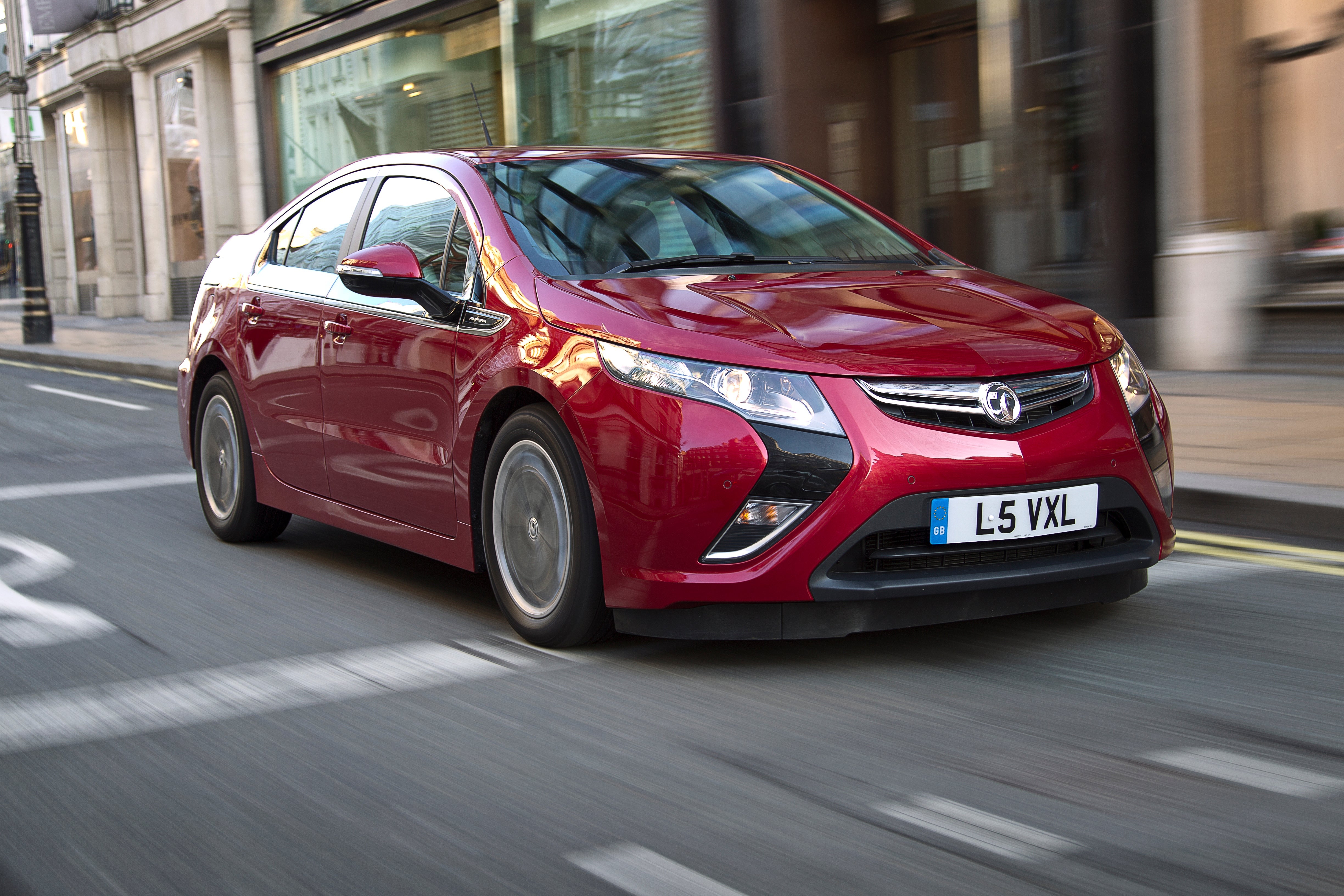Vauxhall Ampera (2012-2014) Review
Written by Andrew Brady
- 2012
- Family hatch
- EV
Quick overview
Pros
- Modern, comfortable interior
- Excellent ride quality
- Clever powertrain
Cons
- Just four seats
- Kooky looks
- Could be obsolete tech soon
Overall verdict
"The Ampera should be given credit for what it does and what it does well; it’s a comfortable, well-equipped electric car that is good to drive and more importantly has the range to make it a viable prospect for a broader range of drivers. It is a niche choice however, and with pure EVs increasing their range it might become an unnecessary solution."
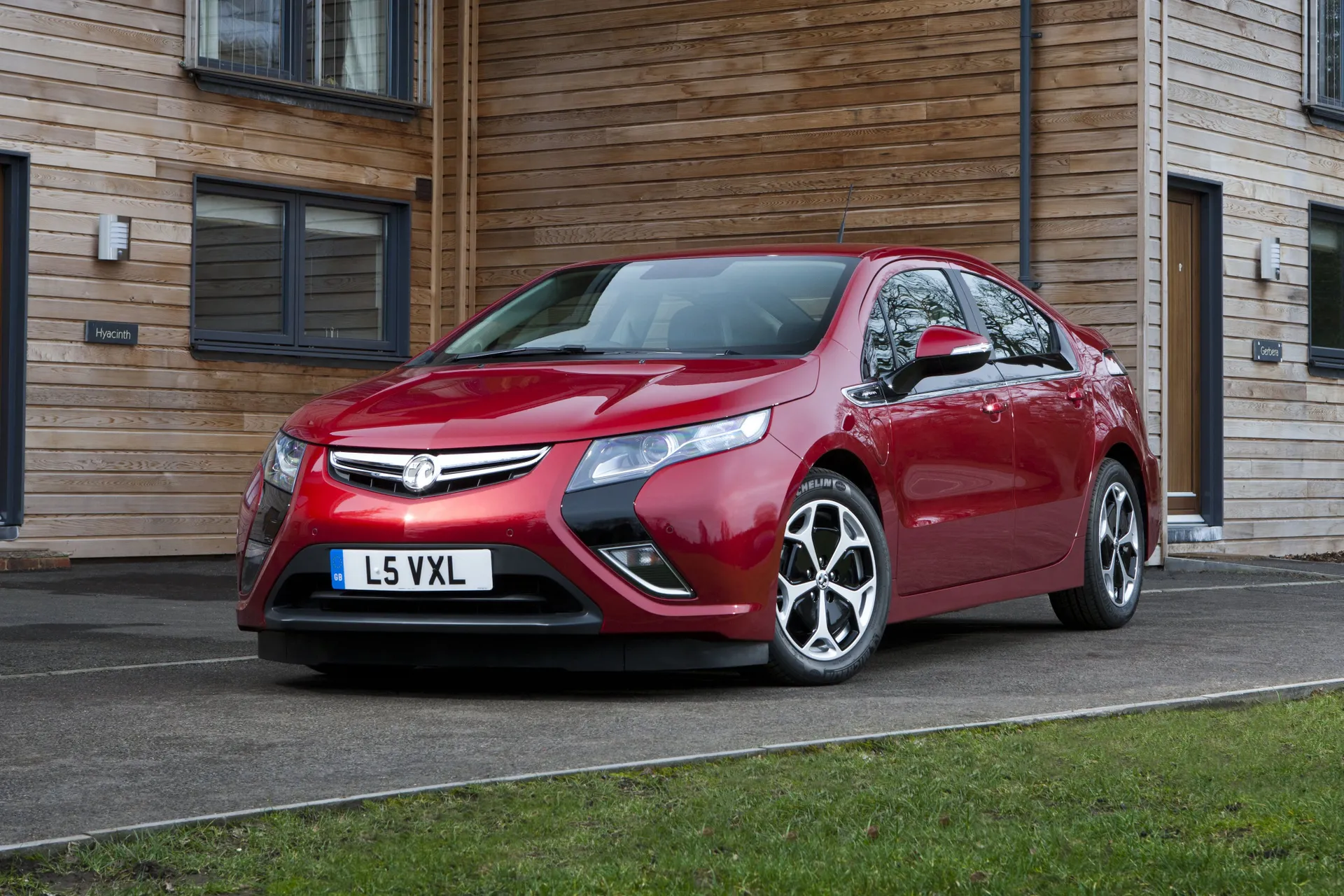
Electric cars have properly landed in the new car market place in a way that they never have before. When people who aren’t interested in cars as a conversation topic start talking about electric cars, half the battle is won.
However, there have been plenty of false starts; battery technology and charging infrastructure changes so rapidly that it doesn’t take long for an idea or a product to become obsolete very quickly. For Vauxhall, this false start was called the Ampera, and although the car itself was intelligent and worked well, it didn’t quite chime with the times and was discontinued in 2015. However, that doesn’t stop it being a good car as a used buy.
You should be able to spot an Ampera with relative ease because it looks like nothing else (except the Chevrolet Volt, an identical version sold under a different badge in some markets). It looks like a saloon from the side profile but it’s really a hatchback, which is a more popular body style in most markets.
The unusual looks are mostly in the name of good aerodynamics - every little helps when you’re trying to use as little energy as possible - but also to help give the Ampera a distinctive look from the rest of the Vauxhall range, in keeping with its radical powertrain.
Inside it’s similarly radical in its design, and this is partly down to how the Ampera is structured. Unlike many current electric cars where the battery pack is stashed beneath the boot floor, the Ampera’s cells are housed in a T-shape along the centre line of the car and between the rear seats.
What that means is that it is a strict four seater, and there is also a clear demarcation between the left and right seats thanks to a bulky transmission tunnel (that’s mostly holding the batteries). It’s not inherently a bad thing aside from taking up some space, but it certainly gives the driver’s chair a cockpit-like feel.
There’s just a single powertrain option for the Ampera, although the capacity of the battery changed slightly in the vehicle’s lifetime. It is powered by an electric motor offering 149PS driving the front wheels, with a battery pack of 16kWh in the early models which was increased to 18kWh towards the end of production.
Additionally the Ampera has a 1.4-litre petrol engine that is used as a generator to recharge the battery when low; this means the Ampera is a range-extender, but it also operates as a hybrid as the petrol engine assists the car at high speeds.
To drive, the Ampera is better than you might expect. For one thing, the ride quality is excellent and it soaks up lumps and bumps very well, a real bonus in a car that will likely spend a lot of time in urban environments. It’s not a quick car of course, but the ability to run on electric power even for limited periods means it’s very quiet too, it is even pleasingly hushed when the engine kicks in.
Is the Vauxhall Ampera right for you?
Although electric cars are not yet at the point where they will suit everyone, the Ampera is a different proposition as its range-extending engine means it can travel a lot further without needing to be plugged in. Even so, the Ampera probably won’t suit anyone who does a lot of long journeys, as it will be able to run on electricity for limited periods and negate the extra weight of the batteries in the first place.
If you need a mid-sized used hatchback and want the ability to run on pure EV power, then the Ampera is worth serious consideration. It is capable, comfortable and avoids the issues of range anxiety while still giving you the flexibility to run on electric power, particularly useful for entry into low-emission zones in cities.
What’s the best Ampera model/engine to choose?
You don’t have any choice over the engine in the Ampera; it’s an electric motor plus the 1.4-litre engine acting as a generator, although it makes sense to get the newest example of the Ampera that you can afford; not only will that mean the batteries will have more life left in them (having gone through fewer charge and discharge cycles) it is also more likely to have the larger 18kWh battery pack.
For most of the Ampera’s life there were two trim levels available, the entry-level Positiv model and the higher spec Electron. The standard specification on both is high, with all models getting a DAB radio, climate control, heated leather seats, cruise control and parking sensors, but the higher-spec Electron is worth the extra as it adds sat-nav - always good to have on an electric car - and a better BOSE audio system.
What other cars are similar to the Vauxhall Ampera?
There are plenty of electric car and hybrid alternatives to the Ampera, but very few that are range extenders in the same way. The Nissan Leaf is a pure electric car, so while it can’t compete with the range of the Ampera it is ‘more’ of an electric car, and with latter models getting big batteries it may be suitable for your needs.
The other range extender model that has a similar drivetrain to the Ampera is BMW’s i3. It’s a much smaller car, although it’s still spacious inside, and with the range-extender fitted (a pure EV version is also available) it has a range of close to 200 miles.
Comfort and design
"Electric cars are no longer being touted as cars of the future - they’re here right now - but stepping into the Ampera feels like a forward jump even though the design is from the early 2010s. It feels more like the cockpit of a plane than the front seat of a car in here; you sit low down in a bucket seat with a substantial dashboard towering in front of you."
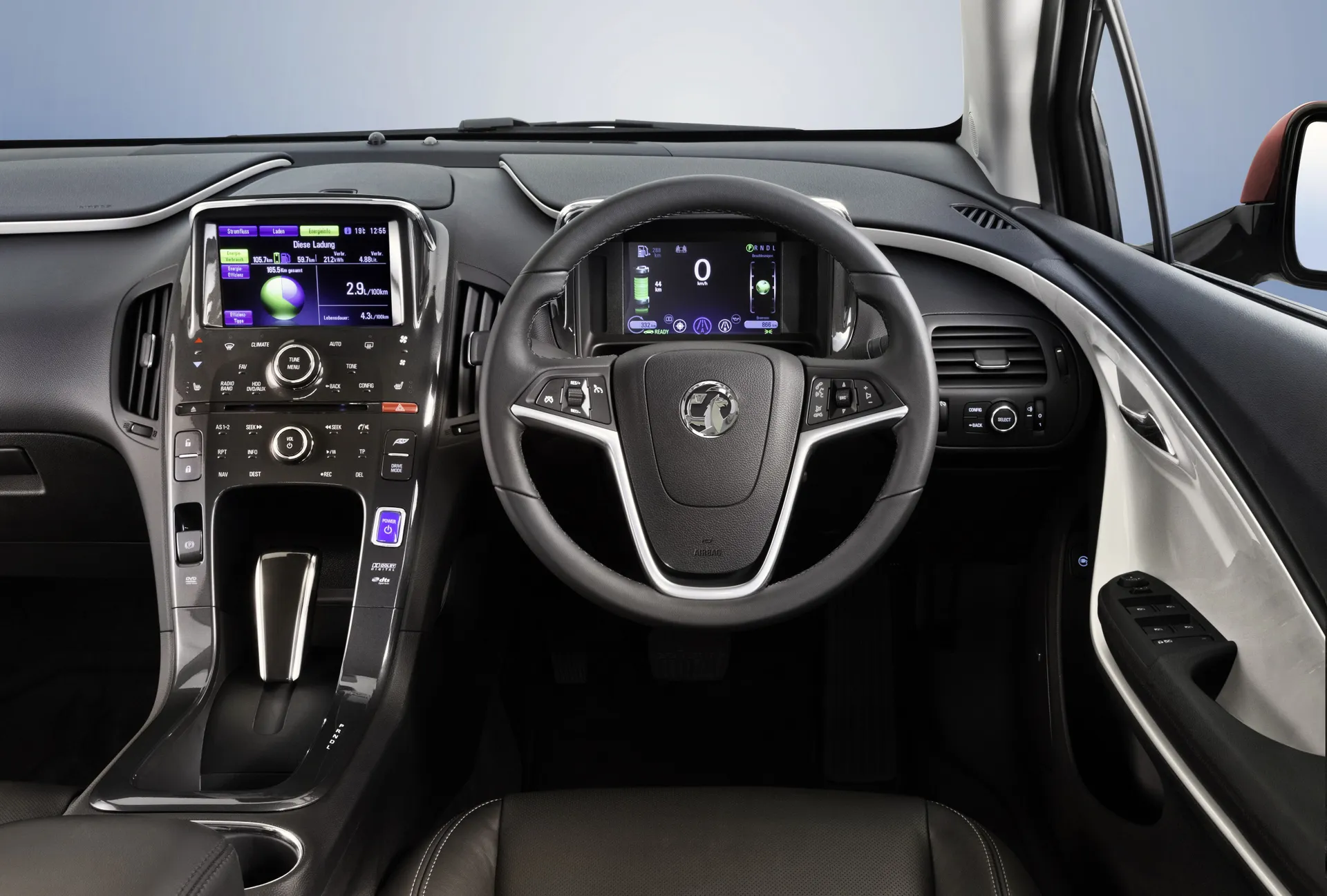
Even so, the driving position is good, with a good range of adjustment in the seat and the steering wheel. Visibility is less good however; that big dashboard robs you of a little forward visibility, while the side and rear windows are quite shallow, reducing the scope of your view.
Still, you’ll be too busy looking at the dashboard to notice at first. Screens instead of instruments and buttons are commonplace today, but few cars had them when the Ampera was new to the market.
The main screen takes care of all the usual stuff like navigation and audio, as well as displaying vehicle status as the battery is discharging or being regenerated on the move. The instrument display covers the usual basic functions and also doubles up as a system monitor, allowing you to easily monitor your driving so you can extract the maximum range from the vehicle battery.
The dashboard itself is also unusual in that it uses touch-sensitive buttons; the bulk of it is an almost featureless panel so you touch the label rather than push a button. It looks smart, but you don’t always know if your press has activated the feature, which can be an irritation.
Quality and finish
Vauxhall has had something of a mixed reputation in terms of quality, and although its more recent products have improved in this respect, the Ampera is from an older generation. Certainly the first impressions when you climb into the driver’s seat are good; the twin screens and the unusual centre console make it feel like a more expensive model, while the flashes of colour in the doors and on the seat trim (depending on the model) give an extra visual boost.
Once you begin to interact with the Ampera a little more you can see that the material’s physical quality doesn’t quite match up to how good they look from afar.
There’s nothing actually wrong in here, it’s just that it doesn’t qualify as premium-level, more a decent standard for a car somewhere in the middle of the pack. You do get a sense that the interior of the Ampera is reasonably well built though, and even where a lid or button might not feel particularly substantial it does at least feel like it will continue to do its job for years to come.
Infotainment
As standard, the Ampera’s infotainment system comes with a 7-inch touchscreen system, with DAB, CD player, Bluetooth, AUX and USB input all standard. The upgraded system includes navigation, a 30Gb hard drive that can store music, a DVD playback facility and BOSE audio with a subwoofer.
Both systems use the same screen, which by modern standards offers graphics that look a little simplified, especially when displaying a map on the sat nav.
Operating the system itself is quite straightforward, and it responds quite readily to inputs, although switching between functions can be a bit more of a drag because of the unusual design of the fascia and its ‘buttons’. However, the sound quality is good on both versions and the specification is strong; it offers more inputs than most systems and the hard-drive means you can carry music with you without using data from your phone.
Better still is the instrument display, which is a good advertisement for how a digital display can be superior to analogue dials. It gives you all the essential information instantly but also helps you drive the car in the most efficient manner thanks to the battery status display, and it is in keeping with the Ampera’s futuristic approach.
Space and practicality
In terms of space and practicality the Ampera is very much a product of its time. Because it was developed in the early part of the 2000's, the battery pack is neither as powerful or compact as more modern electric cars. In addition it also has what is essentially a normal engine to accommodate, even though it only powers the car directly on occasions, and this arrangement has somewhat compromised the space available.
For the front seat passengers there are few issues. There’s a good deal of headroom even for taller folk, while legroom is also generous enough to cope with those who are six foot tall and more. In terms of shoulder room the Ampera is also good, but the wide transmission tunnel does take up a little hip room that would otherwise be welcome; you might feel a little hemmed in.
It’s a similar story in the back, where there is strictly seating for two people as the centre area is taken up by a substantial arm rest used to disguise the presence of more of the battery pack. Legroom is sufficiently generous for adults, but taller people will find the sloping roofline eats into the available headroom - it almost feels like your head is underneath the window rather than the roof.
You also have a similar issue back here in terms of it feeling quite enclosed, with slim windows and the bulk of the centre console sucking up a lot of natural light. Some adults may not be bothered and your children might not care either, but you wouldn’t blame someone for finding the back chairs a bit claustrophobic.
Lift the hatchback tailgate and you’ll find what is a reasonably competitive boot space. There’s quite a high lip unfortunately, but once you’ve crested that you have access to 301 litres of space, which is relatively competitive for the compact class but not as generous as some larger cars. You still have the option of folding the rear seats, and that increases the available space to 1,000 litres - again, this is a useful amount of space but considerably less than the competition.
Handling and ride quality
"For some reason a myth has been allowed to gather that electric cars can’t be good to drive; that a car designed to be as efficient as possible and powered by electricity could never be as much fun to drive as one that has a real engine - not only is that not true, the Ampera amply demonstrates that you can have a car that saves fuel and is good to drive."
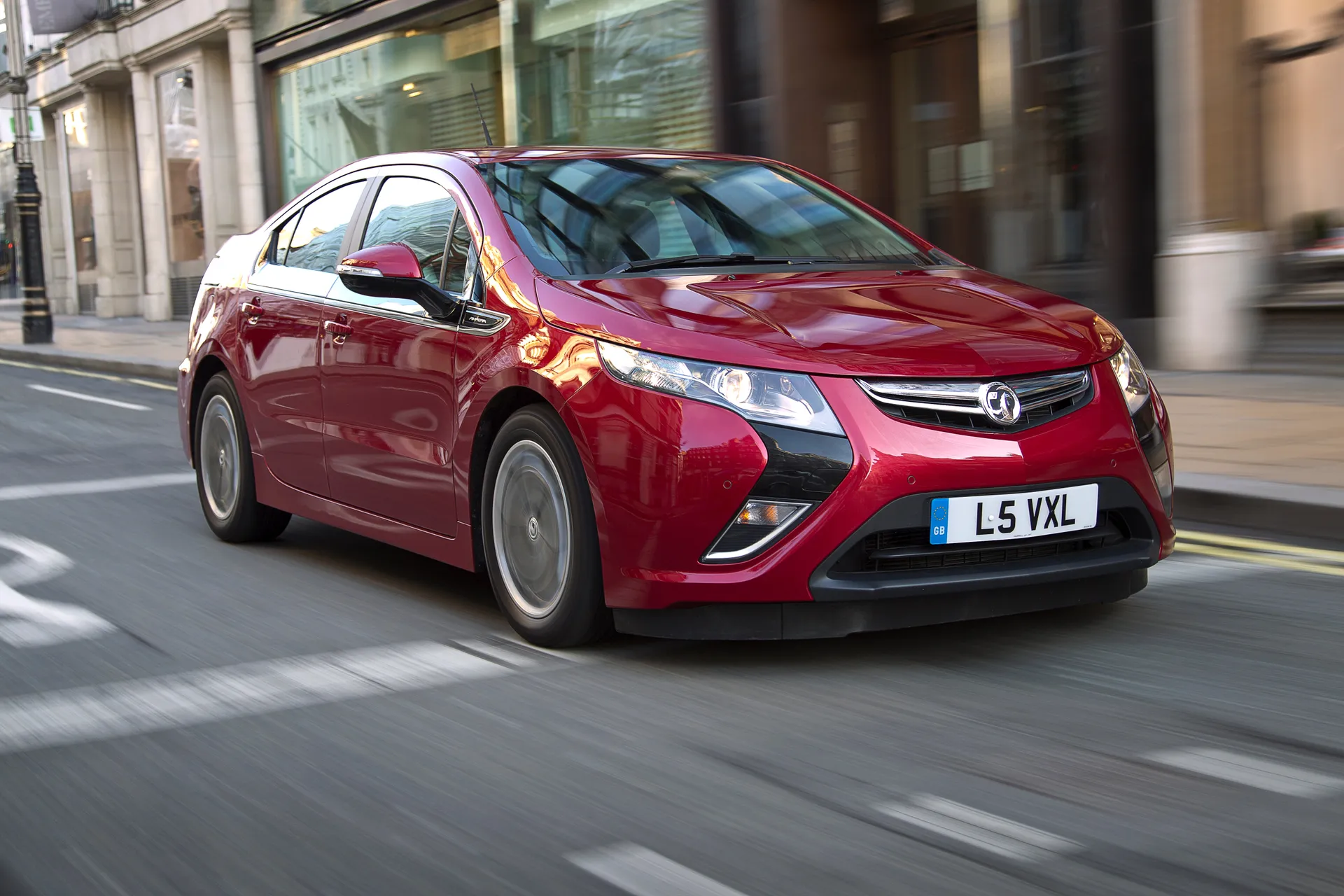
Even before you get to enjoy the Ampera down a country road you’ll be able to enjoy the ride comfort. It’s been set up with soft suspension so that ride quality takes priority over handling, and the result is a car that does an excellent job of drifting over broken roads and insulating you from the worst imperfections.
It is soft to the point where it can become a little floaty over bigger undulations, but it never gets to the point where it feels excessive and it is a small price to pay for such a cossetting approach. It makes the Ampera a pleasing long-distance companion, as well as perfectly suited for the generally poor state of urban roads.
Ordinarily a suspension designed to give good ride quality means it will be less capable through the corners, but the Ampera actually performs very well.
There is some body roll - inevitable with suspension this soft - but it’s not to excess, and the amount of lean just lets you know that you are cornering hard. The steering is accurate, and although it has quite a strong self-centring action, it keeps you well informed about what the front wheels are up to. Grip levels are sufficient rather than exceptional, but if you truly plan to be an efficient driver then you’ll be carrying your speed through the bends - and the Ampera is happy to oblige.
Engines and gearboxes
There’s just the single powertrain option for the Ampera, with an electric motor dishing out 149PS driving through a single-speed automatic gearbox with a 1.4-litre petrol engine to regenerate the 18kWh battery and provide some additional drive at higher speeds.
At lower speeds and while the battery still has charge, it will drive purely on electric power with the engine switched off, and even though it is quite a heavy car it still accelerates with some vigour. Electric motors provide their maximum torque from zero rpm, so the Ampera accelerates smartly away from a standstill and in no way feels like it is compromised by its electric drivetrain.
If the battery is sufficiently depleted while you are driving then the petrol engine will kick in to add charge to the batteries, and it will only contribute to actually powering the vehicle once you reach higher speeds where the drain on the battery is especially high. With the single speed automatic gearbox you can just put it into D and not give it any further thought, which makes for a relaxing drive whatever the conditions are.
To get the most out of the battery range it is important to use the regenerative braking function as much as possible, which means coasting or gently applying the brakes as much as possible to avoid using the actual brakes. The Ampera makes this easy too; you can carefully moderate the brake pressure and see on the vehicle display that the power is being returned to the battery.
Refinement and noise levels
This is another area where the Ampera comes into its own, with its ability to operate on electric power only. Even though a conventionally-powered car may have a stop and start system that shuts off the engine when at rest, the Ampera can be completely silent for as long as you are stationary.
Even when you are on the move, there is just a faint whine from the front of the car and an equally faint rush of the tyres across the asphalt. It is significantly more quiet than the quietest petrol or diesel car, and for many buyers that will be a major plus point.
However, because the Ampera is a range extender rather than a pure electric vehicle the petrol engine will kick in unless all your journeys are very short. When it does fire up the Ampera feels more like a conventional car, although it does take some getting used to when you accelerate but the speed of the engine does not change - that’s because it’s just charging the batteries rather than driving the wheels. Even so, the Ampera is quieter than a conventional car, even if only when there is sufficient charge in the battery.
Safety equipment
The Vauxhall Ampera was tested by EuroNCAP in 2011, and recorded an impressive five star rating. Its most impressive score was 85 per cent for adult protection, with a score of 78 per cent for child protection. A little less impressive are the scores for pedestrian mitigation at a lowly 41 per cent, contrasting with a very high score of 86 per cent for safety assist.
As standard, all Vauxhall Amperas are fitted with front airbags including knee airbags for the driver and passenger, side chest airbags for the front seat passengers and curtain airbags for front and rear passengers.
Isofix child seat mounting points are fitted in the outer rear seats as well as an airbag deactivation switch for the front passenger seat, with seat belt pre-tensioners and load limiters for the front seat occupants but not those in the rear. The Ampera is also fitted with Electronic Stability Control as standard, but there are no other safety assistance systems available.
Because the Ampera is an older car and was tested in 2011, Euro NCAP subsequently declared that its five star rating expired in 2018. This reflects that the testing regime is under constant revision, so that a car receiving five stars in 2020 is performing to a higher standard than a five-star car tested a decade earlier. This does not mean that the Ampera is not a safe car, just that it should not be compared to a current car with a five star rating.
Maximum EV range
The claimed maximum range for the Ampera on battery power alone and without assistance from the engine is 40 miles; this does not compare favourably with current electric cars, but even allowing for the fact that it is a range extender, it is still far less than the BMW i3 which can manage upwards of 100 miles before needing the assistance of the engine. However, if you are using the Ampera in and out of the city - the most sensible way to use a car like this - 40 miles should be sufficient.
MPG and fuel costs
"Calculating the fuel costs for a range extender is a little more complicated. Under the more generous NEDC fuel consumption test of the time, the Ampera achieved a remarkable 235.4mpg combined - just don’t expect to achieve that same figure yourself in a car with batteries that are four years old."
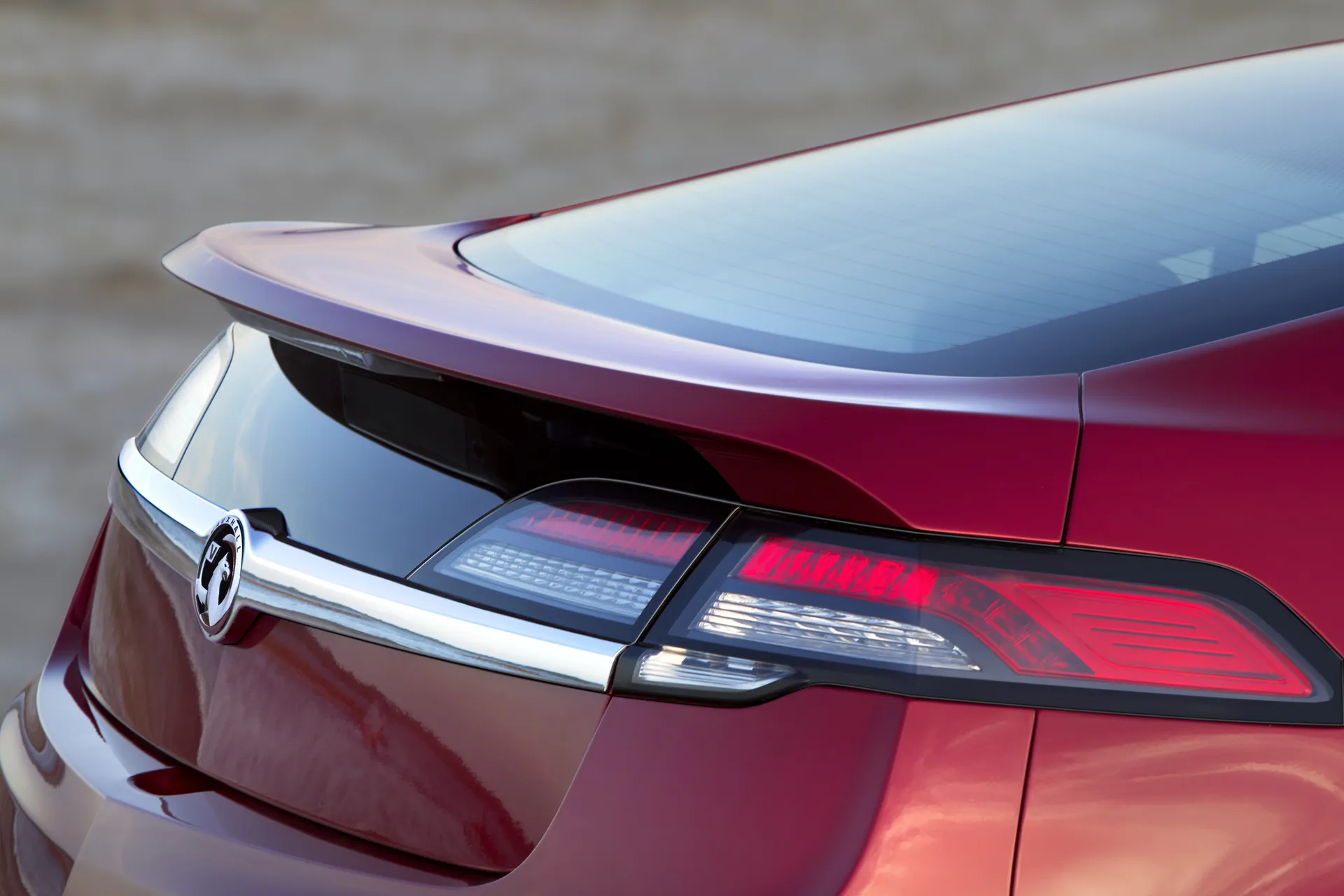
You can expect to get fuel consumption of 70-80mpg with a bit of effort though, and the more you drive at low speeds in electric mode the higher that figure will be. The fuel tank is a modest 35 litres so won’t be expensive to fill, and the Ampera’s battery can be recharged in six hours from a home charger or under three from a high power outlet.
Insurance groups and costs
Because there are no engine options and just three trims to choose from, there are few surprises in the Ampera’s insurance groups. Being an electric car with a sizeable initial price tag the groupings are higher than similarly sized non-electric cars; the Positiv and Earth models are in group 20, while the high-spec Electron is in group 21. However, as long as your premiums aren’t very high in the first place and you have a decent no-claims bonus you shouldn’t find the Ampera too expensive to insure.
VED car tax
The good news in terms of VED for the Ampera is that it qualifies as a pure electric vehicle - it’s almost a technicality because the engine never drives the wheels on its own, only in support of the electric motor - so that means you’ll pay the zero rate of VED. There’s always the capacity for the rules to change of course; the Ampera’s official emissions figure is 27g/km - not zero - so it’s not classified as a zero-emission vehicle. But while the rules stay as they are you can add a saving of £150 a year to your budget.
How much should you be paying for a used Vauxhall Ampera?
"The Vauxhall Ampera was only on sale in the UK for three years, and part of the reason it was discontinued was because of poor sales, so you won’t have a huge choice of used Amperas to pick from. However, if you do have your heart set on one it pays to be patient; you may find waiting a while will see more examples come onto the market."
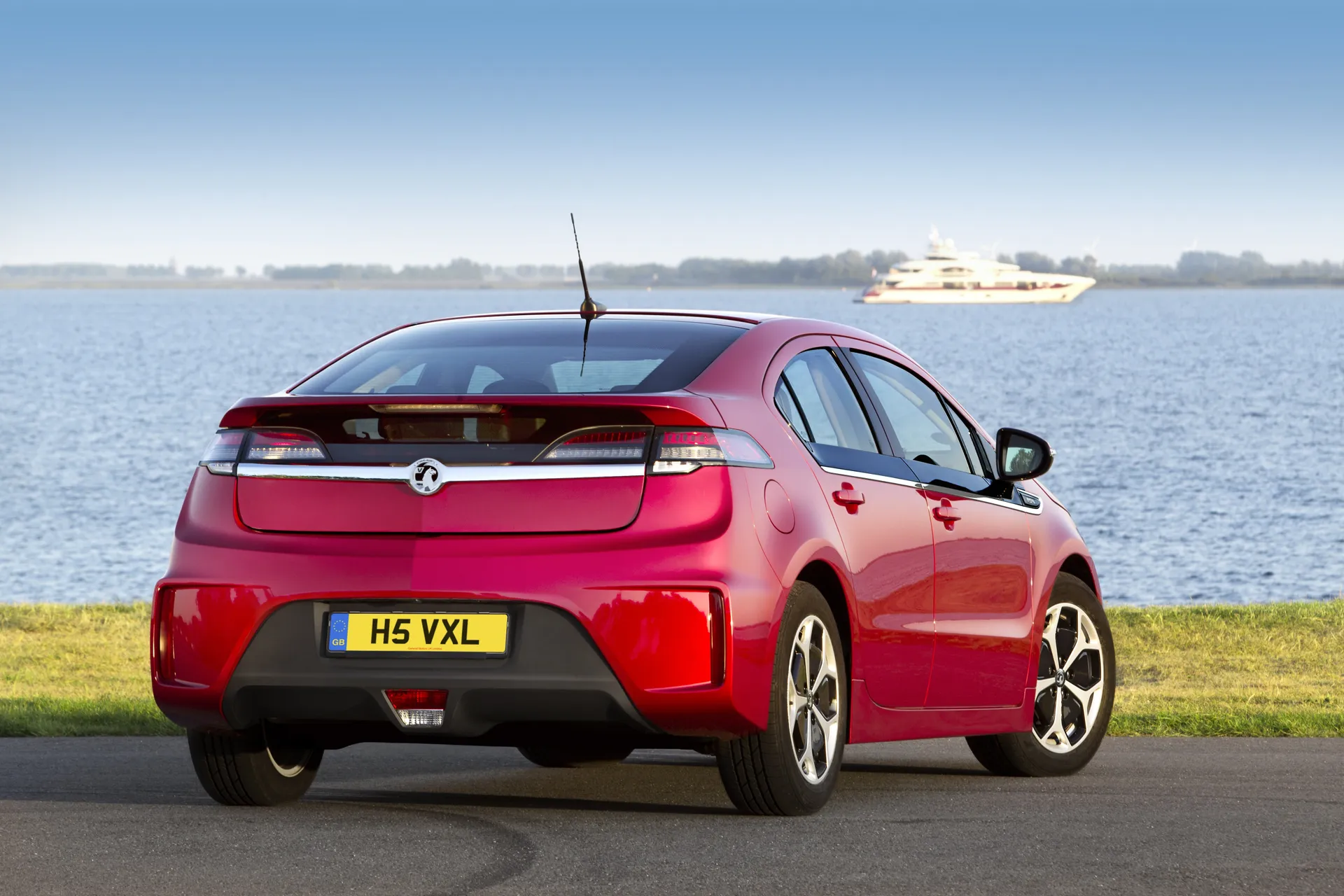
A quick search of the HeyCar classifieds turned up a few examples currently for sale, and because of their relative scarcity you may find prices vary quite a bit. As an example, we found two examples that were very similar; both with around 60,000 miles on the clock, the same specification and both from 2014, but one was priced at £10,500 and the other was £1,000 more. Be prepared to shop around and look at cars across the country to give you the widest choice.
Trim levels and standard equipment
As standard, the entry-level Electron model is fitted with driver and front passenger airbags, front seat thorax & roof side (dual stage) airbags, knee airbags, remote keyless entry, leather steering wheel with rake/reach incorporating cruise/radio control, climate control, park heating, cabin preconditioning, rain sensor, power windows, power locks, ambient led-based front and rear reading lamps, heated leather seats, 7'-inch colour touch screen, DAB radio, MP3 AUX in and USB port, Bluetooth with speech recognition, rear parking sensors.
The higher-spec Positiv model adds satellite navigation, a 30Gb hard drive, DVD playback, BOSE audio with subwoofer, rear view camera.
Get our latest advice, news and offers
Keep me updated by email with the latest advice, news and offers from heycar.
By submitting you agree to our privacy policy
